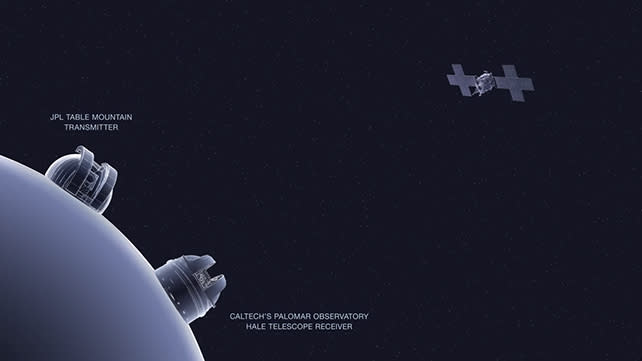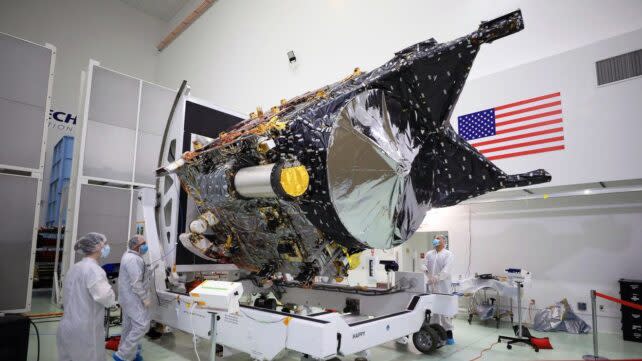Ultimately, we want to extend the World Wide Web to the rest of the Milky Way. NASA recently demonstrated a key piece of technology that could help with that. It can send messages via laser over a distance of nearly 16 million kilometers (10 million miles).
That is about 40 times the distance between the moon and the Earth. This feat was achieved in November 2023 and was the first time that optical communications could be transmitted over such a distance.
Traditionally, we use radio waves to communicate with distant spacecraft, but higher frequencies of light, such as near infrared, offer greater bandwidth and therefore a huge boost in data speed.
If we ultimately want to be able to send high-definition video messages to and from Mars with no significant latency, this is a step toward the technology we need.
The test was part of NASA’s Deep Space Optical Communications (DSOC) experiment. The successful establishment of the communications link is known as “first light.”

“Achieving first light is one of several significant DSOC milestones in the coming months, paving the way for higher data rate communications capable of transmitting scientific information, high-definition images and streaming video to support humanity’s next great leap forward,” said Trudy Kortes, director of Technology Demonstrations at NASA Headquarters, at the time.
We all rely on similar technology embedded in fiber optics for our rapid communications on Earth. However, in this article, the technology has been adapted for use in deep space, to improve upon existing methods of sending information to Earth.
Because it is infrared light, engineers can easily transform its waves into a laser form. This will not make the light travel any faster, but it will clean up the beam and confine it to a narrow channel. This requires much less power than spreading radio waves and is harder to intercept.
That doesn’t mean it’s a simple task. Bits of data are encoded in the photons emitted by the laser, requiring some heavy-duty instrumentation – including a superconducting, highly efficient detector array – to prepare the information for transmission and translate it at the other end.
Another challenge is getting the system to adjust its positioning configuration in real time. In this latest test, it took about 50 seconds for the laser photons to travel from the spacecraft to the telescope, and both were racing through space while this was happening.
The laser transceiver that made the call is aboard the spacecraft Psyche, which is on a years-long mission to the asteroid belt between Mars and Jupiter. It made contact with the Hale telescope at the Palomar Observatory in California.


Psyche is expected to fly by Mars, so ongoing testing is underway to refine and improve this innovative method of communication using near-infrared lasers, and to ensure that it is as fast and reliable as needed.
“It was a huge challenge and we still have a lot of work to do, but we were able to send, receive and decode some data in a short time,” said Meera Srinivasan, DSOC operations manager at NASA’s Jet Propulsion Laboratory.
You can read more about DSOC here.
An earlier version of this article was published in November 2023.




